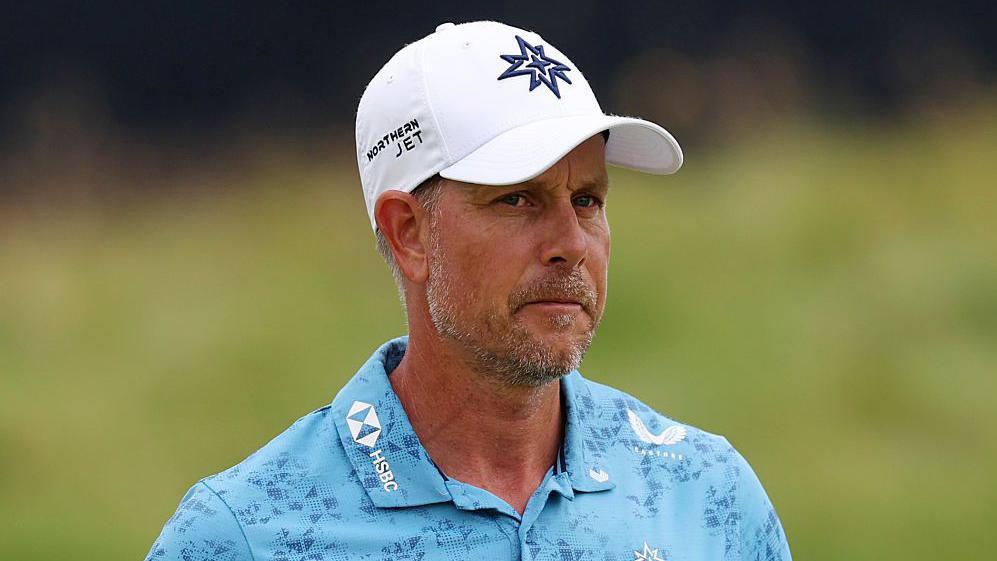Henrik Stenson’s Road Back to the DP World Tour: A Journey of Triumph and Transition
Henrik Stenson, the former Open champion, is making headlines once again as he charts his course back to the DP World Tour in 2026 after facing relegation from the LIV Golf League. The seasoned Swedish golfer, who burst onto the scene with his memorable Claret Jug victory at Royal Troon in 2016, has recently settled over £1 million in fines with the European-based circuit for participating in competing LIV events. His decision to return highlights not only his ability to adapt but also reveals the complexities facing professional golfers in today’s evolving landscape.
Stenson was one of the first high-profile players to join the Saudi Arabian-backed LIV Golf Tour, which marked a significant shift in the golfing world when it launched three years ago. This bold move led to his dismissal as Europe’s Ryder Cup captain for the 2023 tournament in Rome, underscoring the contentious nature of his decision. The LIV Golf League, with its ambitious financial backing and alternative tournament structure, has attracted numerous golfers, creating both opportunities and controversies in the sport.
2023 proved to be a challenging year for Stenson on the LIV circuit. After an underwhelming performance—he finished 49th in the individual standings—he found himself facing relegation when he was surpassed by England’s Ian Poulter in the final individual event. This consequence raised questions about the sustainability of his transition to LIV and his future as a competitive player. As the 56-player LIV circuit introduces stricter requirements for accreditation by the Official World Golf Ranking, the stakes continue to rise for golfers involved.
Reflecting on his career, Stenson remarked, “Over the course of a career, you’re going to have good years, you’re going to have bad years—it’s part of professional sport.” This acknowledgment emphasizes the unpredictable nature of competitive golf while also highlighting his desire to continue pursuing excellence. His resignation from the DP World Tour earlier this year further complicates his return, as he had faced sanctions for rule violations related to his switch to LIV.
Despite the challenges, a return to the DP World Tour appears to be Stenson’s preference over trying to reclaim his position in the LIV circuit. The DP World Tour offers a rich history and a rigorous competitive environment, elements Stenson seems eager to embrace once more. The decision reflects a broader trend among golfers weighing their options amid the shifting landscape of professional golf.
Stenson’s journey is not isolated; other players have also navigated this complex terrain. For instance, England’s Laurie Canter has become the first player to regain eligibility on the PGA Tour after a stint with LIV. Canter’s resurgence highlights the opportunities that remain within the traditional tour system. His successful season on the DP World Tour propelled him to a commendable second place in the PGA Tour eligibility rankings via the Race to Dubai, showcasing the potential for players to rebuild their careers.
Fines and penalties continue to loom for LIV participants, with officials imposing heavy sanctions for breaches of contract. Players can face bans from up to eight events, alongside substantial monetary fines for not adhering to the established rules of the DP World Tour. This complex regulatory environment underscores the financial and professional risks associated with careers in professional golf, especially for those who switch tours.
Stenson’s trajectory raises essential questions about the future of golf and the evolving relationships between players and their tour affiliations. The LIV Golf League seeks recognition within the official framework of the sport, striving for player eligibility in major championships. As the league develops, it remains to be seen how established tours like the DP World Tour will adjust their strategies in response.
As Stenson looks forward to rejoining the DP World Tour, he brings with him a wealth of experience, notable accolades, and the resilience needed to overcome adversity. His path serves as a reminder of the enduring spirit of athletes navigating through both triumphs and challenges in pursuit of excellence. As the golfing community watches his next steps, Stenson’s commitment to reclaiming his position highlights the ongoing evolution of the sport.
In summary, Henrik Stenson’s decision to return to the DP World Tour after his LIV Golf League relegation signifies a pivotal moment in his career. His journey is emblematic of the broader challenges and opportunities faced by professional golfers today. As the landscape of their sport continues to change, Stenson’s resilience and adaptability will serve him well as he transitions back to where it all began. With the support of his fans and the golfing community, the next chapter of his career promises to be filled with excitement and renewed ambition.


